Balbacua was inherited from the Spaniards a long time ago. But there are also other versions in other provinces like Cagayan de Oro, Bohol and Davao. Imagine, cooking a dish for almost a day makes you wonder what kind of dish that took so long to cook. The average cooking time for this dish is about seven hours. The name of this dish came from the Spanish word “barbacoa” which means cooking meat very slowly on an open fire for several hours. Maybe our ancestors named it balbacua because of the length of time involved in cooking.
Just in case you can’t find ox tail, which is very expensive compared to other parts of the cow, you can also use the combination of ox skin and beef ribs to simulate the ox tail which is mostly skin and bones and some fatty tissues. You can also use pork knuckles if you want to make a variation which requires less cooking time. Check this pork pata balbacua if you are interested.
Balbacua: A Cebuano Dish Worth Every Minute of Simmering
When I first tasted it, I was a child, sitting at my Lola Linda’s bustling dining table in Cebu, savoring a dish that was both rich and unfamiliar. The long, tender hours that went into preparing it were a testament to the dish’s unique, time-honored flavors. A beloved Filipino specialty, is a hearty stew slowly simmered for hours, marrying tender beef, collagen-rich skin, spices, and a depth of flavor that makes it unforgettable. This slow-cooked dish may have Spanish origins, but its flavors have been fully embraced by the Filipino kitchen. Versions abound across regions, from Cagayan de Oro and Davao to Bohol, each adding its own twist to this soulful, savory dish.
The name itself draws curious attention, evoking nostalgia for every Filipino who has experienced the communal, delicious wait for its flavor to fully develop. Though it’s traditionally cooked with oxtail, some families—like mine—swap in ox skin and beef ribs for a similar texture and taste that doesn’t break the bank. In fact, my Tita Marge often says that it’s these hearty substitutes that give the dish an even richer texture, not to mention how budget-friendly they are.
The Ingredients: Building Blocks of Balbacua’s Flavor
At its core, it is a unique combination of ingredients that come together in a symphony of flavors. The main stars are oxtail, ox skin, or beef ribs, which lend their gelatinous textures and subtle beefy flavors after hours of simmering. In Cebuano households, a bit of turmeric is used to add an earthy undertone, while anise gives it a hint of sweetness and warmth. These ingredients slowly infuse the meat during the cooking process, creating layers of flavor that make each bite so fulfilling.
What really surprised me the first time I helped cook balbacua with my cousins was the addition of peanuts, giving the dish an unexpected depth and mild nutty taste. This technique, my cousin Joey explained, is what makes the broth rich and a bit thicker, helping it cling to the meat and skin. Alongside peanuts, the salted black beans and a dash of patis (fish sauce) at the end are traditional ways to bring a savory, salty kick that elevates the entire dish.
Why Balbacua Takes So Long to Cook
For anyone unfamiliar with this dish, the cooking time might seem daunting. My uncle Rico, who is a patient balbacua master, once told me, “Good things come to those who wait.” And with this dish, that saying couldn’t be truer. The seven hours (yes, seven) of cooking isn’t just for show—it’s crucial for transforming the meat and skin into the tender, almost gelatinous texture that defines the dish.
The technique of slow cooking on low heat allows the collagen in the oxtail, skin, or ribs to break down fully. This slow release of collagen gives the broth a luxurious, silky consistency and helps infuse the meat with a deep, robust flavor. Not only does this technique soften the meat, but it also melds all the spices and flavors into a harmonious dish that’s truly worth the wait.
Step-by-Step: Cooking to Perfection
Making the dish may require some patience, but it’s a straightforward process. You start by boiling the oxtail in water and salt for a brief 15 minutes to clean it, draining away impurities before moving on to the real cooking. After this first boil, a second round with turmeric, anise, garlic, and onion sets the foundation for the broth’s flavor. The meat then simmers for another couple of hours until it’s semi-tender.
Once the meat is starting to soften, beef brisket and peanuts are added, slowly cooking again for another two or three hours. The brisket adds a heartier bite to the stew, while the peanuts continue to deepen the broth. When everything is almost tender, the final ingredients—chili peppers, salted black beans, pork and beans, and leeks—are added to the pot. This combination of last-minute flavors brings a hint of spice, a touch of sweetness, and that unmistakable aroma of a finished ox knuckle dish.
A splash of annatto oil is another Cebuano secret that brings out the golden hue of the stew, giving it that warm, inviting color. Annatto oil, made by gently frying annatto seeds in oil, is a finishing touch that brightens the dish visually while adding a subtle earthy note.
The Origins of Balbacua and Its Regional Variations
Though balbacua is particularly popular in Cebu, its roots go deep into the Philippine culinary landscape. The dish was likely introduced by Spanish colonizers, and over time, Filipinos adapted it, making it their own by adding ingredients native to the islands. Across the Visayas and Mindanao, different versions are made with slight tweaks: in Bohol, you might find a version that leans on garlicky flavors, while Davao adds a bit more spice to the stew. Each area lends its personality to the dish, but the essence remains the same—a deeply comforting, time-intensive stew that brings families together.
Serving and Enjoying: A Family Affair
In our family, the dish is reserved for special weekends or gatherings. Tita Marge insists it’s best eaten on a lazy Sunday, with the scent of spices lingering in the kitchen from the early morning until late afternoon. Traditionally served hot, it pairs beautifully with steamed rice, and some even enjoy it with puto or warm, soft bread rolls to soak up every last drop of the broth. By the time it’s ready, everyone in the family has gathered around, eager for a taste.
Balbacua isn’t just food; it’s an experience. The hours of simmering on the stove fill the house with an aroma that’s rich, warm, and inviting—a smell that takes me back to those childhood Sundays with my family. Each bowlful is a comforting reminder of the care and time it takes to prepare something special. And even if you’re new to making it, just know that with every stir and every hour of simmering, you’re recreating a piece of Filipino history, a dish that binds us across generations and regions.
How to Cook Balbacua
Ingredients
- 1 kilo ox tail cut in serving size (or you can use half kilo of ox skin or ox feet and half kilo of beef ribs)
- 1/2 kilo beef briskets cut in serving size
- 150 grams raw peanuts shelled and peeled or ground peanuts
- 1 small can black salted beans drain and rinse in running water then drain again
- 1 small can pork and beans
- 1 red onion bulbs peeled and quartered
- 3 cloves garlic minced
- 1 pc fresh tumeric or luyang dilaw , about 3 inches
- 2 stalks baby leeks sliced (optional)
- 3 cloves star anise
- 2 pcs chili peppers
- 1 Tbsp. annato oil
- Patis or fish sauce to taste
Instructions
How to cook Balbacua:
- Boil ox tail in salt and water for 15 minutes, drain.
- Boil ox tail again in water with tumeric, anise, garlic and onion then simmer for about 2-3 hours, or until semi-tender.
- Add beef briskets and peanuts then continue boiling over low fire for another 2-3 hours.
- When tail and briskets are almost tender, add chili peppers, salted black beans, pork and beans, leeks and annato oil.
- Cook for another 30 minute to 1 hour and season with patis to taste. Serve hot.
To Make The Annato Oil:
- Make annato oil by combining 1 1/2 Tbsp. cooking oil and 1 Tbsp. annato seeds.
- Or you can just fry it in oil in a frying pan for 2 to 3 minutes. Remove the seeds and set aside the annato oil.
Video
Notes
Cooking Tips:
Choosing the Right Cuts of Meat
For the best results, select ox tail, which provides a rich, gelatinous texture perfect for the dish. If ox tail is unavailable or too expensive, use a combination of ox skin and beef ribs to mimic its texture. This ensures the dish remains authentic and flavorful without compromising quality.Utilizing a Pressure Cooker
To save time while maintaining flavor, use a pressure cooker to tenderize the meat before simmering. Cook the ox tail and beef briskets in the pressure cooker for about an hour. This reduces the overall cooking time significantly, allowing you to enjoy the dish faster without sacrificing its signature tenderness.Enhancing Flavor with Annatto Oil
Infusing your cooking oil with annatto seeds adds a distinctive color and depth of flavor to the dish. Heat the oil with the seeds until it turns a vibrant orange, then remove the seeds. This simple step not only enhances the visual appeal of the dish but also enriches its taste, making it even more delectable.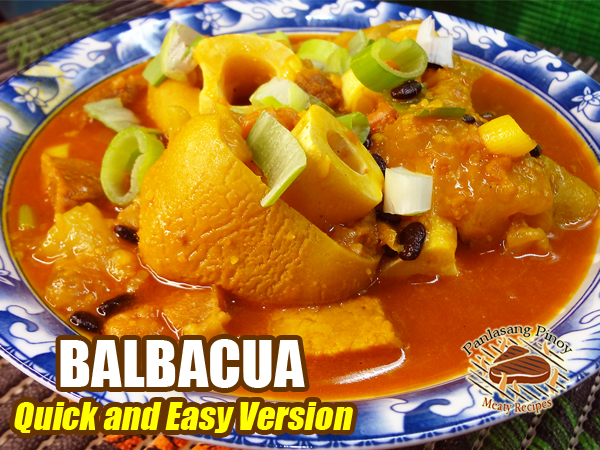

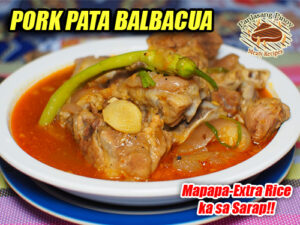
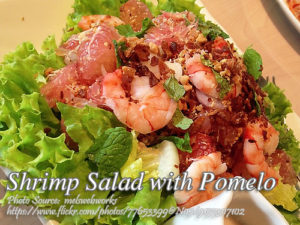
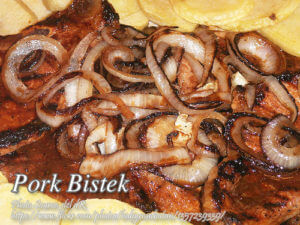
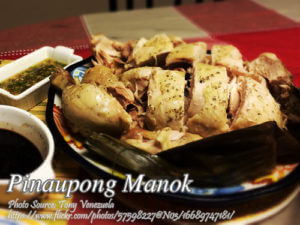
Hello, any peanut substitute for those who have allergies? Or is it ok to omit this?
As a Cebuana, I grew up having this on special occasions when my papa cooks. Thank you for sharing this. God bless you!
MJ
Hi MJ, I think you can use ground toasted rice instead of peanuts. Thanks for sharing your thought and I hope u also watched the video!
Naalala ko lang Tatay ko, masarap din po yon magluto ng Balbacua. Nong little boy pa lang ako nagluluto yon. Ngayon ako na lang mag luto sundan ko lang po Sir Manny ang recipe mo, makakakain na rin ako ulit nito. Salamat po ng marami sa Sir Manny.
HI Alyn, sige po madali lang naman magluto nito para ka lang nag luluto ng nilagang baka. Kaya lang medyo matagal lang lutuin kasi kailangan malambot na malambot yung balat ng baka.
Can I use pork feet instead of beef?
Hi Mona, I’m not sure if you can but you can try and maybe you can share your experience using the pork feet.
Would it be ok to cook this on pressure cooker po?
Hi Grace, yes you can use pressure cooker but you have to reduce the cooking time.
hi. Ive never tried cooking this dish, but ive tasted the same in some roadside restos in the Visayas, Mindanao..just wanna ask- what makes the dish (when cooked)- reddish? would a chilli poweder be a good substitute to a chilli peppers? Thanks !!
Hi GC, I think chili powder can be a substitute to chili peppers since they are almost the same. Only the chili powder is in dried powder form. And about the reddish color, maybe the restos are putting achuete.
Hello!!Can I used my slow cooker for this recipe?
Hi Maria, yes I think you can use it.
Hi Earl, please read instruction #3.
Sir when do I add the peanuts?
You can use peanut butter also, a spoonful or 2 will do let your tastebuds decide 😉
I like to learn more on cooking…I wish….
Hi Alene, Just remember the saying “A journey of a thousand miles begins with a single step.”
WE MISS FILIPINO FOOD HERE IN WESTERN NEW YORK WHERE NO PNOY RESTAURANTS EXISTS HERE BUT YOU CAN BUY SOME INGREDIENTS FROM CHINESE GROCERIES. ACROSS THE BORDER IN ONTARIO CANADA, THERE ARE SOME PINOY RESTAURANTS THOUGH. WE HAVE A SLOW COOKER WHICH CAN COOK ADOBO AND MAYBE THE BALBACUA. THANKS
Hi Butch, I think you can buy the ingredients in an Asian supermarket.